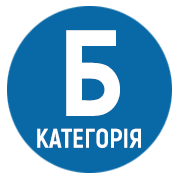APPLICATION OF THE PROFESSIONALLY ORIENTED TASKS IN LEARNING INFORMATION TECHNOLOGIES AT HIGHER EDUCATION ESTABLISHMENTS
DOI:
https://doi.org/10.25128/2415-3605.21.1.2Keywords:
professionally-oriented tasks, competencies, information technologies, research, office packagesAbstract
The most often used information technologies in the future professional activity of students of pedagogical universities are computer technologies of text, tabular and graphic data processing, work with multimedia data, as well as computer telecommunications. Mastering the skills of working with these technologies involves the study of office suites that allow you to perform data processing work. The use of information and communication technologies provides ample opportunities for the organization of educational and cognitive activities of students. Therefore, it is important to teach students the effective use of information and communication technologies in their professional activities. As far as much attention is paid not only to the knowledge that graduates must master, but also the formation of their professional skills, the most modern requirements for higher education meets a new type of educational tasks – professionally-oriented tasks. The article clarifies the main aspects of the introduction of professionally-oriented tasks in the educational process of pedagogical higher educational institutions. New possibilities and ways of using a package of office programs in the work of a teacher have been investigated. The professionally-oriented tasks have been applied in creating an educational and methodological complex for students in the study of Microsoft Office 2010. An example of step-by-step and sequential system of tasks for obtaining a certain outcome result taking into account the professional orientation of students has been given. New approaches to the introduction of professionally-oriented tasks in teaching the course “Modern information technologies in the educational process” have been developed. They will allow students to apply skillfully the acquired knowledge and skills to work with office suite programs in their studies, flexibly adapt to situations that arise in the professional activities of teachers, independently acquire the necessary knowledge, effectively use them to solve various problems in practice. A set of interrelated methods was used to solve the tasks included in the study: theoretical: analysis and generalization of scientific and pedagogical literature, modeling of the educational process; empirical: observation of the educational process at school during pedagogical practice and at the university. The introduction of information technology into the educational process of higher education allows teachers to qualitatively change the content, methods and organizational forms of learning.
References
Vykladannіa kompyuternykh tekhnolohiі na osnovi bezkoshtovnoi ofisnoi prohramy openOffice.org. Informatsiyni tekhnolohii v osviti: materialy Vseukrayinskoi naukovo-praktychnoi konferentsii (24–26 travnia 2006 r.). Melitopol: MDPU, 2006. S. 41–42. URL: http://conference.mdpu.org.ua/viewtopic.php?t=232
Vlasenko K. V. Formuvannya vmin ta navychok studentiv inzhenernykh vyshchykh navchalnykh zakladiv u protsesi evrystychnoyi diyalnosti. Ridna shkola. 2005. № 4. S. 55–58.
Hudyryeva O. M. Vprovadzhennia informatsiyno-komunikatsiynykh tekhnolohii u navchalnyi protses vyshchoi osvity. Informatsiyni tekhnolohii v osviti: zbirnyk naukovykh prats. Kherson: Vydavnytstvo KHDU, 2010. Vyp. 6. S. 101–112. URL: http://www.nbuv.gov.ua/portal/soc_gum/itvo/2010_6/15.pdf
Yermolenko A. A. Osoblyvosti metodu formuvannya profesiynykh navychok maybutnikh uchyteliv istoriyi. Visnyk Chernihivskoho natsionalnoho pedahohichnoho universytetu imeni Tarasa Shevchenka. 2011. Vyp. 93. URL: http://www.nbuv.gov.ua/portal/Soc_Gum/Vchdpu/ped/2011_93/Ermol.pdf
Zyazyun I. A. Pedahohichna maysternist – tekhnolohia pedahohichnoi diyi. Teoria i praktyka pidhotovky maybutnikh uchyteliv do pedahohichnoyi diyi: materialy Vseukrayinskoyi naukovo-praktychnoi konferentsii z mizhnarodnoiu uchastiu / za red. I. A. Zyaziuna, O. A. Dubaseniuk. Zhytomyr: Vydavnytstvo ZHDU im. Ivana Franka, 2011. S. 6–12.
Innovatsiyni metody navchannya. URL dostupu: http://www.duep.edu/section/science/new-metod-learning/uk.htmli
Lazaryeva T. A. Dydaktychni zasoby tvorchoho navchannya studentiv tekhnichnykh dystsyplin. Problemy inzhenerno-pedahohichnoyi osvity: zbirnyk naukovykh prats. Kharkiv, 2007. Vyp. 17. S. 274–282.
Morze N. V. Metodyka vykladannya informatyky: navch. posibnyk / pid red. M. I. Zhaldak. Kyiv: Pidruchnyk, 2004.
Muzyka O. L. Osoblyvosti tsinnisnoi pidtrymky ta obminu tsinnistyu u vykonanni studentamy profesiyno-oriyentovanykh zavdan. Visnyk psykholohii ta pedahohiky. URL: http://www.psyh.kiev.ua/
Olefirenko N. V. Navchannia studentiv metodu proektiv iz vykorystanniam informatsiyno-komunikatsiynykh tekhnolohiy. Naukovo-doslidna robota studentiv yak faktor pidvyshchennia profesiynoi pidhotovky maybutnikh uchyteliv: zbirnyk naukovykh prats / redkol.: L. I. Bilousova ta in. Kharkiv: Fakt, 2010. Vyp. 1. S. 63–66. URL: http://kafinfo.org.ua/files/Sbirnyk_1.pdf






